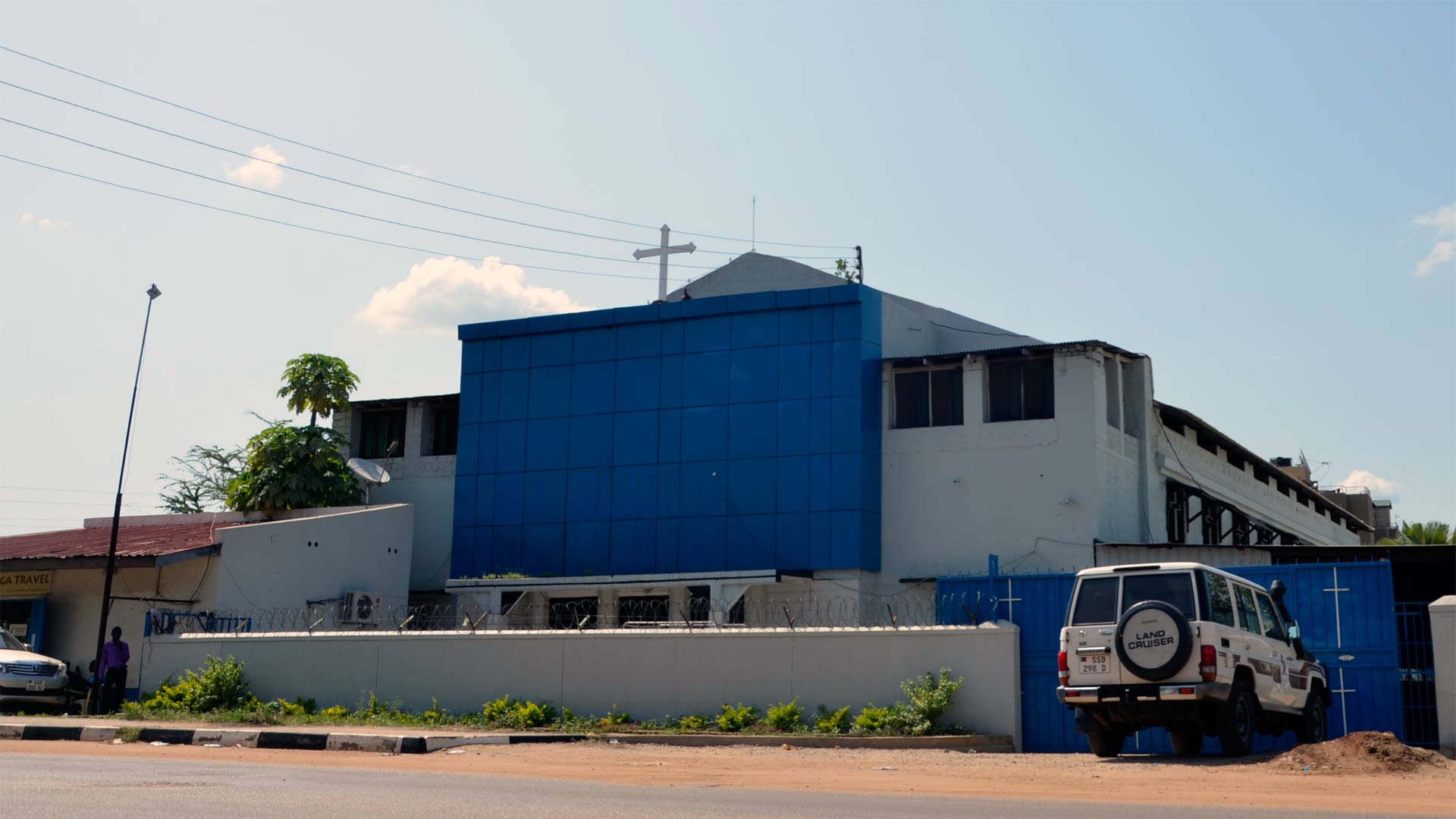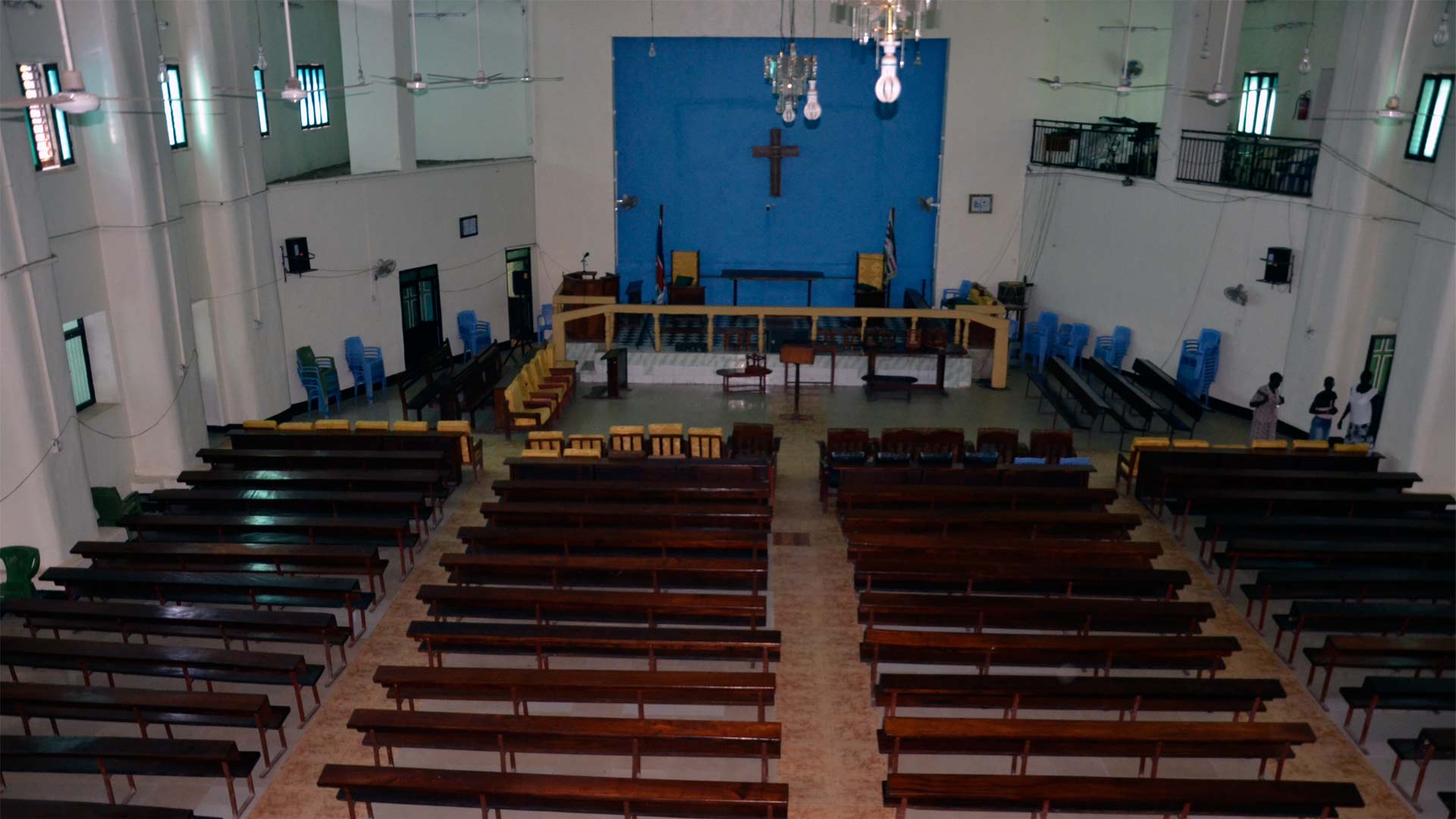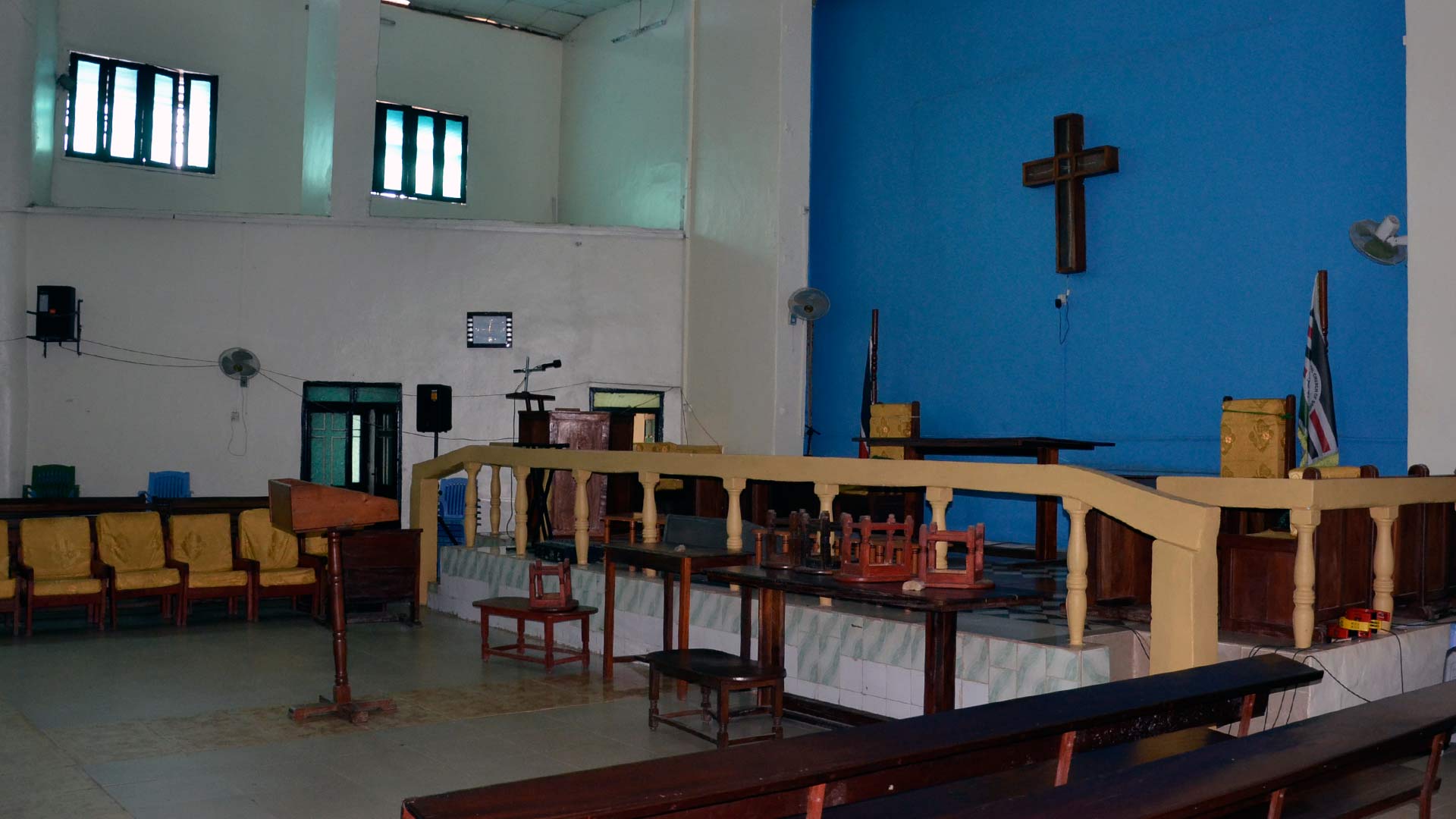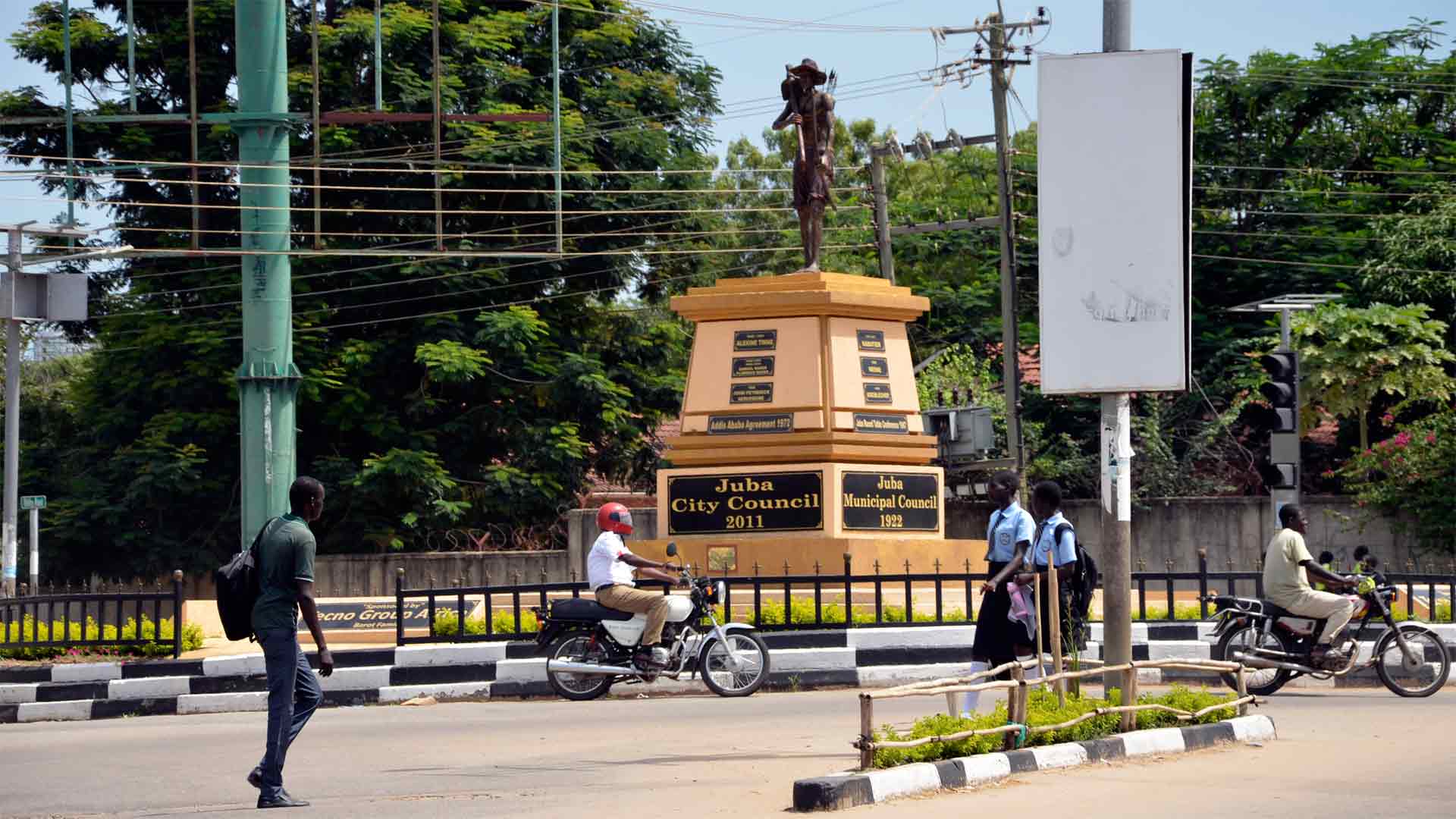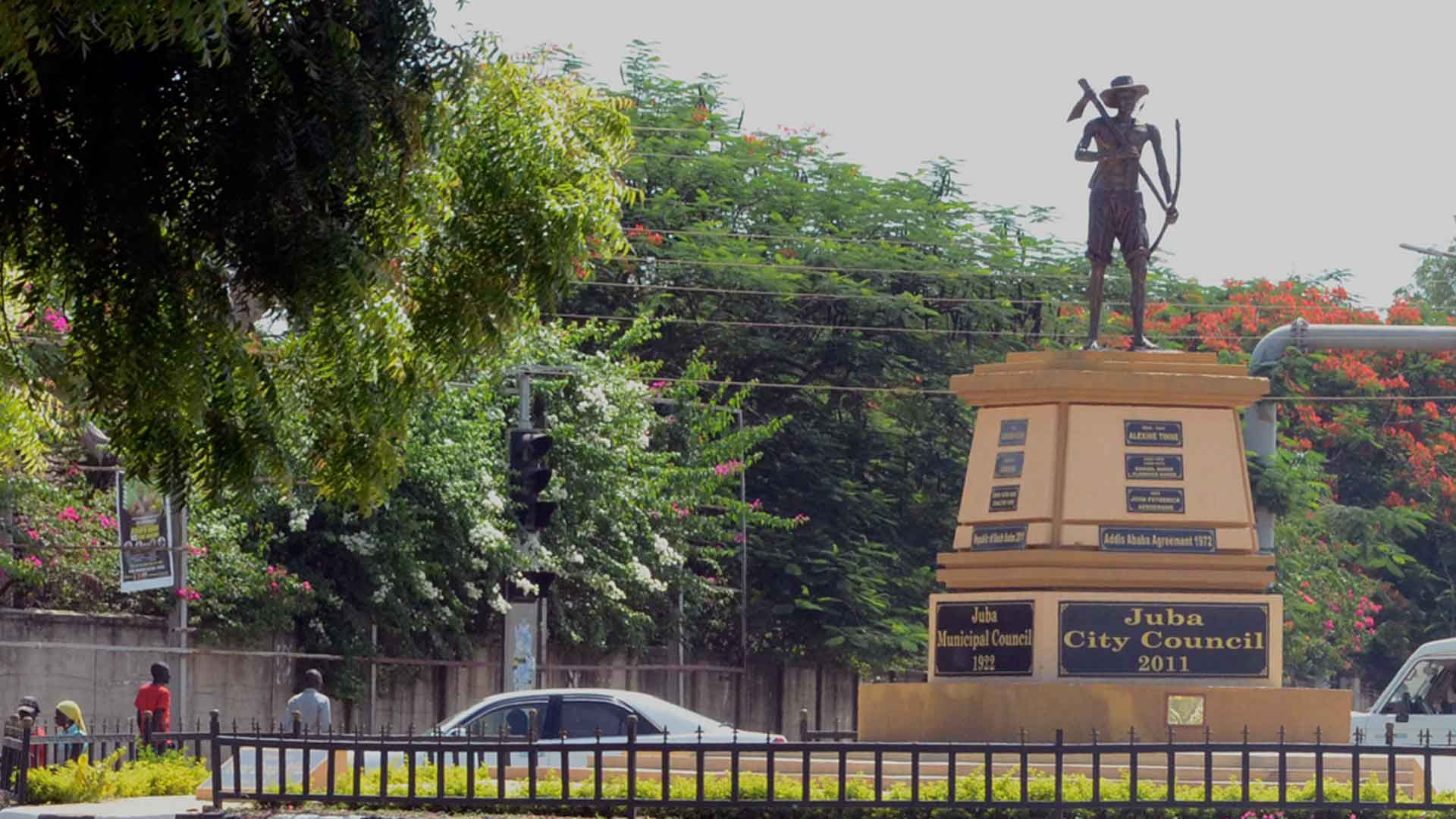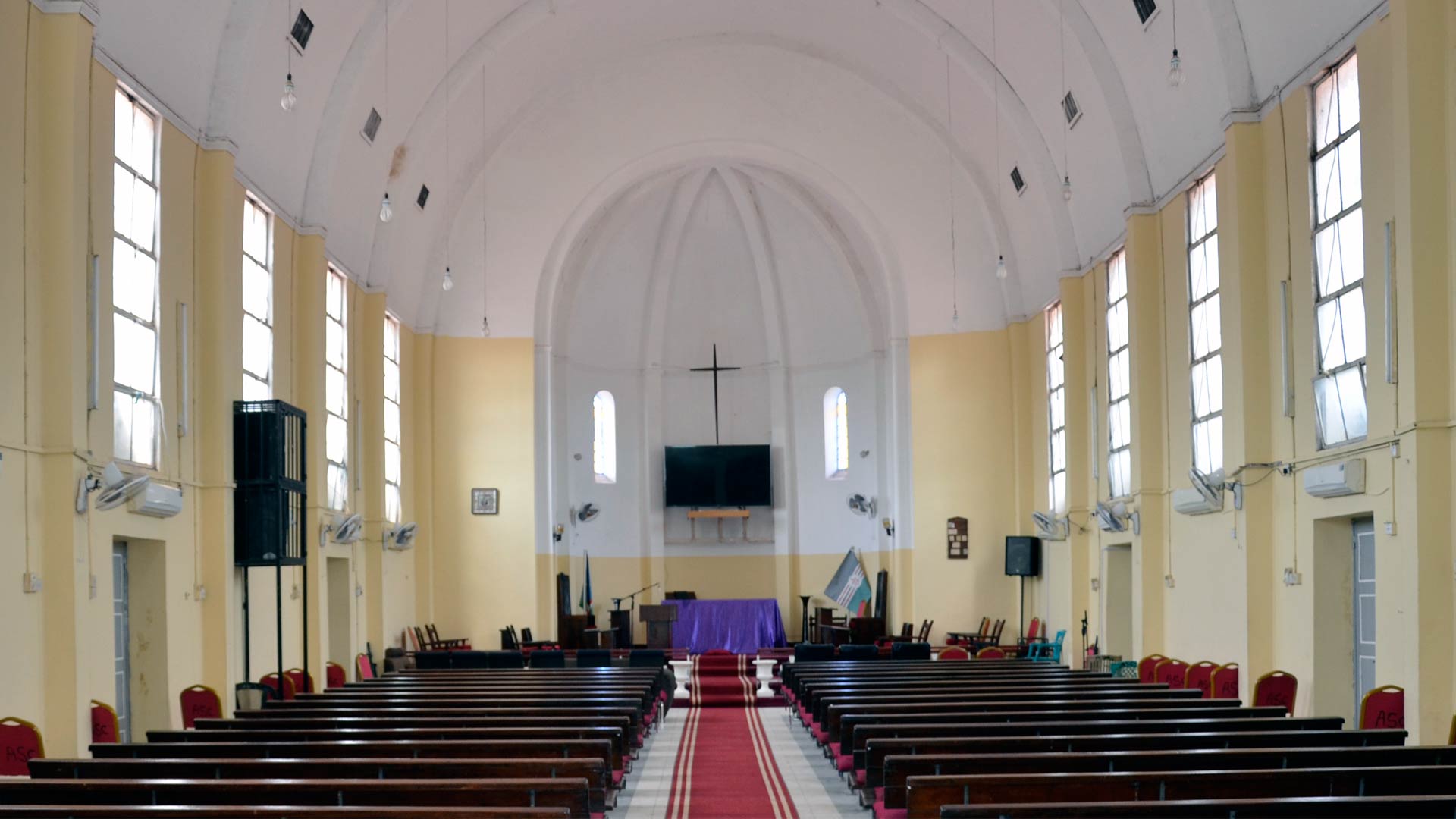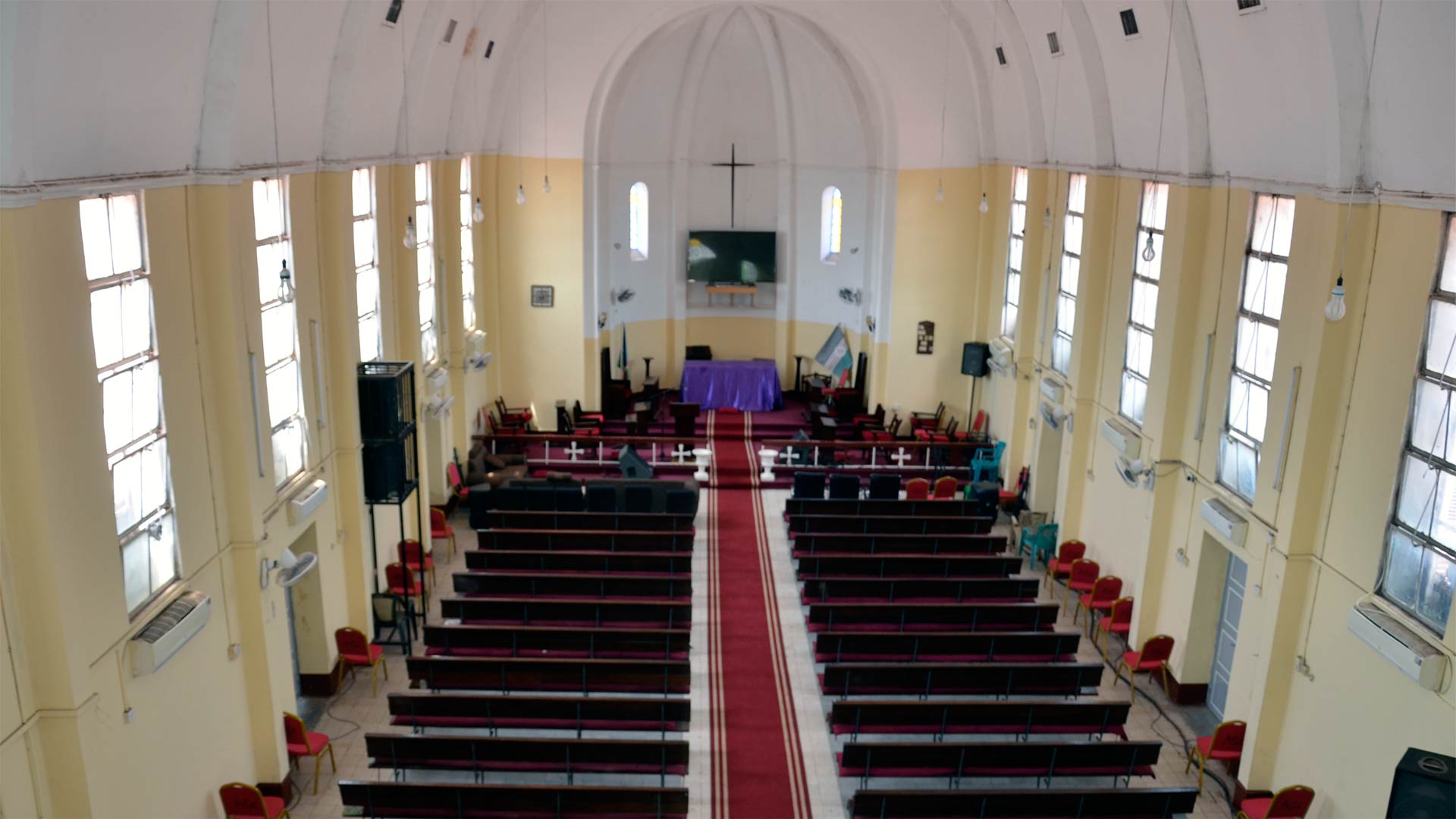Hai Cinema
Those who witnessed the years where the cinema was operating keep fond memories of popular movie nights and American westerns. Established by a Greek merchant in the 1960s, the cinema flourished during the period of the Addis Ababa Agreement (1972-1983), but closed down after the start of the Second Sudanese Civil War in 1983. Its owner left Juba. The building remained more or less vacant until 2005, when the signing of the Comprehensive Peace Agreement (CPA) opened a new era of development for the city and the country at large. A businessman bought the facility and turned it into a church, St. Emmanuel Jieng Parish, an Anglican congregation whose members belong to the Dinka Bor community. But in spite of the cinema’s disappearance, the area remains identified to it and is still known as Hai Cinema, the cinema district.
If you head west for about 400m, on the road that marks the start of Hai Malakal, you will find the Mobil Roundabout, topped by a statue representing Jubek, the man considered as the founding father of Juba (and whose grave isn’t too far away from here).
One of the most famous churches in Juba stands here. All Saints Cathedral, an Anglican church part of the Episcopal Church of South Sudan, was built in 1959. It holds daily services in English, Arabic and other South Sudanese languages. This is where the funeral prayers for the late leader John Garang de Mabior were held in August 2005, before he was buried in what is now known as John Garang Mausoleum. All Saints Cathedral became a refuge for more than a thousand Juba citizens who fled the July 2016 fighting between Riek Machar’s and the government’s armed forces. Anglican Bishops in Juba, echoed by the Archbishop of Canterbury, called for the cessation of hostilities while providing humanitarian assistance to the displaced.



